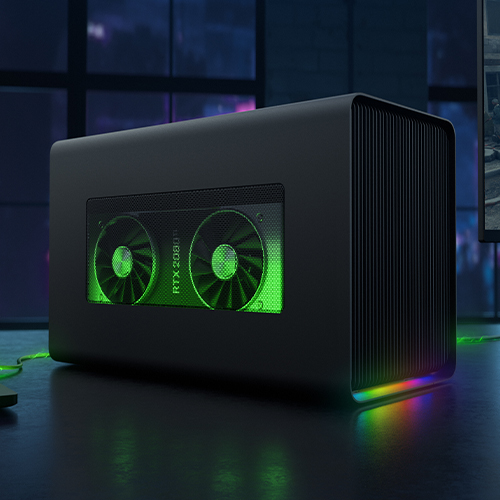
Razer RC21-01310100-R351 Core X Externes Grafikkarten-Gehäuse, Schwarz : Amazon.de: Computer & Zubehör

Razer Core X Chroma: Thunderbolt 3 Externes Grafikkarten Gehäuse für Windows 10 und Mac, Externe Grafik-Lösung für Laptops mit RGB Chroma Beleuchtung: Amazon.de: Computer & Zubehör

Razer RC21-01310100-R351 Core X Externes Grafikkarten-Gehäuse, Schwarz : Amazon.de: Computer & Zubehör

Mit Razer zum innovativen Upgrade für das Home Office mit Komfort, Ergonomie und Gaming-Power - Notebookcheck.com News

Razer Core X Externes Grafikkarten-Gehäuse in Nordrhein-Westfalen - Eschweiler | Grafikkarte gebraucht kaufen | eBay Kleinanzeigen ist jetzt Kleinanzeigen

Razer Core X Chroma: Thunderbolt 3 Externes Grafikkarten Gehäuse für Windows 10 und Mac, Externe Grafik-Lösung für Laptops mit RGB Chroma Beleuchtung: Amazon.de: Computer & Zubehör

Razer RC21-01310100-R351 Core X Externes Grafikkarten-Gehäuse, Schwarz : Amazon.de: Computer & Zubehör

Razer Core X eGPU Gehäuse Thunderbolt externe Grafikkarte in Niedersachsen - Braunschweig | Grafikkarte gebraucht kaufen | eBay Kleinanzeigen













![Externe Grafikkarte für Laptop: 5 eGPU-Gehäuse [Update 2023] Externe Grafikkarte für Laptop: 5 eGPU-Gehäuse [Update 2023]](https://www.only4gamers.de/wp-content/uploads/2019/05/externe-grafikkarte-auf-schreibtisch.jpg)

